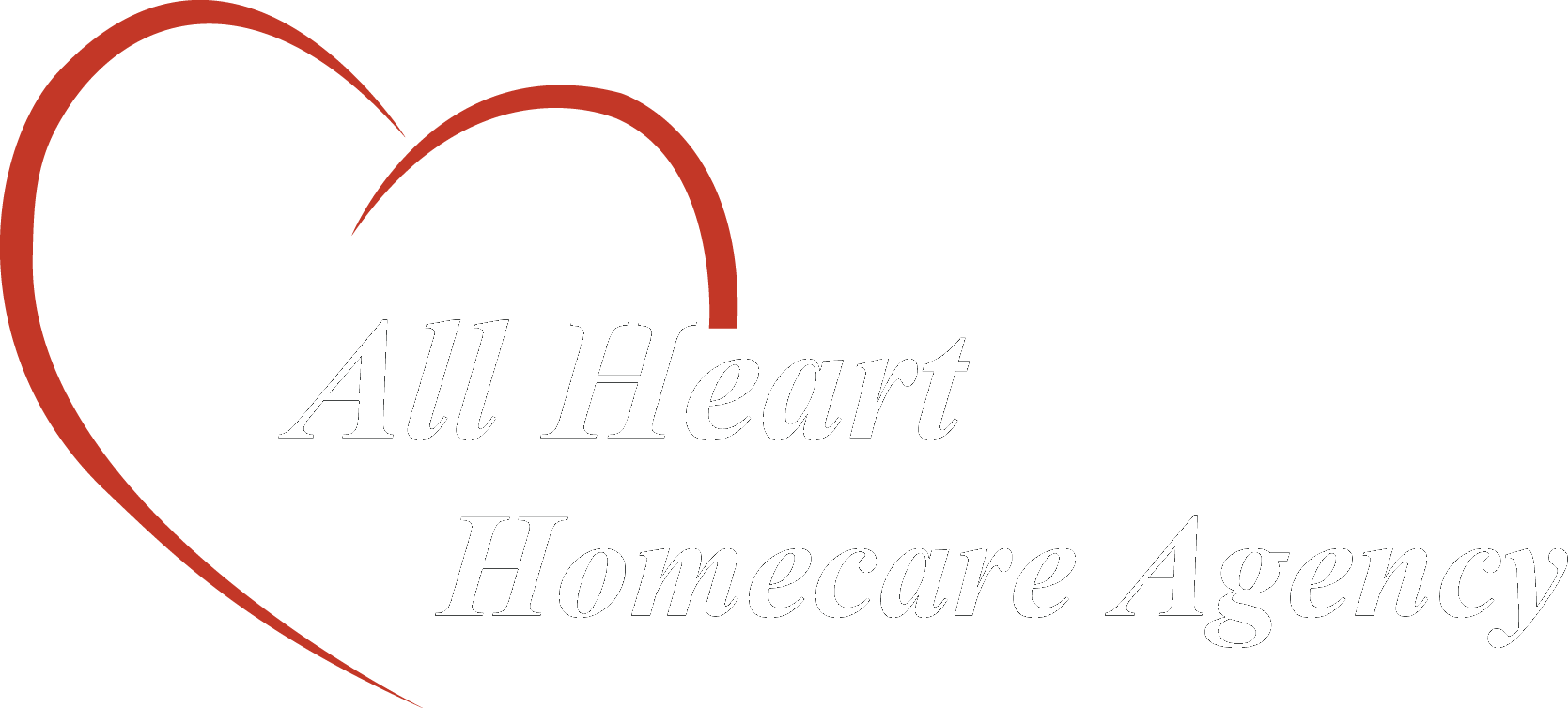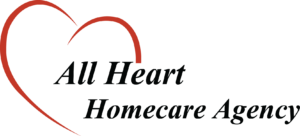Understanding who is eligible for the NHTD waiver program is crucial for New York residents seeking alternatives to nursing home care. The Nursing Home Transition and Diversion (NHTD) Waiver Program represents a vital lifeline for individuals who prefer to receive long-term care services in their homes and communities rather than in institutional settings. This comprehensive guide will walk you through every aspect of NHTD waiver eligibility, helping you determine if you or your loved one qualifies for this transformative program.
The primary goal of the NHTD waiver program is to provide Medicaid-eligible individuals with the support they need to live safely and independently in their communities while receiving the same level of care they would receive in a nursing facility. By understanding the eligibility requirements and application process, you can make informed decisions about your long-term care options and potentially avoid unnecessary nursing home placement.
Who Can Apply for the NHTD Waiver? (Eligibility Criteria Explained)
Eligibility for the NHTD waiver program is determined by criteria set by the New York State Department of Health, ensuring the program supports individuals who genuinely require nursing home-level care but can safely receive services in a community setting. Designed to be both thorough and accessible, the Nursing Home Transition and Diversion eligibility framework provides a clear pathway for qualified individuals to access community-based long-term care.
To qualify for the NHTD program, applicants must meet all core eligibility criteria and demonstrate their ability to live safely within the community with the right supports in place. This program acts as a vital bridge between institutional care and independent living, providing professional care services in the comfort and familiarity of home and community settings.
Do You Have Medicaid Coverage?
To participate in the NHTD program, the first step is establishing Medicaid eligibility, which serves as the foundation for accessing all NHTD waiver services. Applicants must currently have Medicaid coverage that specifically includes community-based long-term care services. Eligible coverage types may include “All Services except Nursing Facility Service,” “Community Coverage with Community-Based Long-Term Care,” or “Outpatient Coverage with Community-Based Long-Term Care.” Medicaid coverage verification is a critical requirement and must be obtained through the New York State system as part of the NHTD application process.
If you are not enrolled in Medicaid but believe you may qualify, applying for Medicaid coverage is an essential first step before pursuing NHTD waiver services. Since not all Medicaid plans cover community-based long-term care services, it is vital to understand your specific coverage. Collaborating with a knowledgeable service coordinator or reaching out to your local Medicaid office can help confirm if your current plan supports NHTD participation or if adjustments to your plan are needed. This integration of Medicaid eligibility and NHTD qualification ensures a robust safety net, enabling individuals to access the essential supports they need for long-term care in their communities.
Are You Within the Required Age Range?
New York NHTD waiver requirements include specific age criteria that determine program eligibility. Applicants must fall within one of two age categories: individuals between 18 and 64 years old with a verified physical disability, or individuals who are 65 years and older at the time of application. These age parameters ensure that the program serves both younger adults with disabilities and older adults who require long-term care support.
For individuals under 65, the physical disability requirement must be thoroughly documented and verified through acceptable means. This can include award letters or determinations from Supplemental Security Income (SSI), Social Security Disability Insurance (SSDI), or Railroad Retirement letters for total permanent disability. Additionally, documentation from the Local Department of Social Services, physician records, hospital summaries, or nursing home records may be used to verify the existence of a qualifying physical disability.
The NHTD program recognizes that long-term care may be needed at any stage of adulthood due to aging, chronic health issues, or early-life disabilities. By providing personalized support to adults of all ages, the program ensures New Yorkers can access nursing home-level care while staying in their communities. This inclusive model empowers individuals with the resources to maintain dignity, independence, and a sense of belonging.
Do You Require a Nursing Home Level of Care?
How to qualify for the NHTD program fundamentally depends on demonstrating the need for nursing home level of care (NHLOC), also known as nursing facility level of care (NFLOC). This assessment serves as a critical gateway to program participation, ensuring that NHTD services are reserved for individuals who would otherwise require institutional care.
What Does ‘Nursing Home Level of Care’ Actually Mean?
Nursing home level of care represents a standardized assessment of care requirements necessary for Medicaid nursing home admissions. This standard encompasses individuals who require significant assistance with activities of daily living, have complex medical needs, or face safety risks that would typically necessitate 24-hour supervised care in a nursing facility setting.
The assessment process takes into account a variety of critical factors, such as physical challenges, cognitive impairments, complex medical needs, and overall safety considerations. Individuals who meet the criteria for nursing home-level care often require significant support with essential daily activities like bathing, dressing, grooming, toileting, transferring, and eating. Additionally, they may have medical conditions that necessitate regular monitoring, precise medication management, or the implementation of specialized care plans to ensure their well-being and safety.
Understanding this standard helps applicants and families recognize whether NHTD waiver services might be appropriate. The goal is not to exclude individuals from community-based care, but rather to ensure that those receiving NHTD services truly need the intensive support that the program provides.
What’s Involved in a Level of Care Assessment?
The level of care assessment process involves a comprehensive evaluation using the Hospital and Community Patient Review Instrument (H/C PRI) and SCREEN tools. These assessments must be completed by qualified medical professionals, social workers, or designated evaluators appointed by the state’s Medicaid agency within 90 days of the NHTD application.
The PRI serves as a comprehensive “picture” of an applicant’s current medical, physical, and cognitive status. This detailed assessment examines the applicant’s medical conditions, cognitive functioning, mental health status, and functional capabilities. The information collected through the PRI process is used to determine Medicare and Medicaid reimbursement levels and helps establish the appropriate level of care needed.
The SCREEN component focuses specifically on determining the applicant’s ability to return to or remain in the community with appropriate supports. This evaluation considers not only current care needs but also the potential for community-based services to meet those needs safely and effectively. Together, the PRI and SCREEN provide a complete picture of an individual’s care requirements and community living potential.
Who Conducts the Assessment and How Is It Decided?
Level of care assessments are conducted by compassionate and highly trained professionals, including nurses, social workers, and other qualified evaluators approved by the New York State Medicaid agency (such as All Heart Homecare). These dedicated experts possess the specialized skills needed to evaluate intricate care needs, taking into account the delicate interplay between medical conditions, functional limitations, and the essential support required to promote safety and well-being. Their trustworthy approach ensures that each individual’s circumstances are carefully considered, allowing for the development of a personalized care plan that honors their dignity and fosters improved quality of life.
The assessment process typically involves in-person evaluation, review of medical records, consultation with healthcare providers, and consideration of family and caregiver input. Evaluators examine the applicant’s ability to perform activities of daily living, assess cognitive functioning, review medical conditions and treatments, and evaluate safety concerns that might affect community living.
The decision-making process considers multiple factors, including fall risks, medication management capabilities, need for specialized medical equipment or procedures, mental health and behavioral concerns, and the availability of informal supports. Evaluators use standardized scoring systems to ensure consistency and objectivity in determining whether an individual meets the nursing home level of care threshold.
Do You Have a Safe Living Arrangement in the Community?
Eligibility criteria for community-based long-term care include having an appropriate living arrangement that complies with the Home and Community-Based Services (HCBS) Settings Rule requirements. Applicants must identify the specific location and living arrangements where they will reside while participating in the waiver program, ensuring that these settings support independence, choice, and community integration.
The living arrangement assessment considers factors such as physical accessibility, safety features, proximity to community resources, and the availability of informal supports. The goal is to ensure that individuals can live safely in their chosen community setting while receiving the services and supports provided through the NHTD waiver program.
What Is the HCBS Settings Rule and Why Does It Matter?
The Home and Community-Based Services (HCBS) Settings Rule, established by the Centers for Medicare and Medicaid Services in 2014, sets minimum standards for community-based care settings. This rule ensures that NHTD waiver participants receive services in settings that promote integration, choice, autonomy, and other essential consumer protections.
The HCBS Settings Rule emphasizes the importance of creating environments that truly support and enrich the lives of individuals receiving home and community-based services. It is a commitment to fostering inclusion by ensuring that all service settings are fully integrated into the greater community. This integration allows individuals to access meaningful opportunities, such as employment and social engagement, that enhance their sense of belonging and purpose. The rule also upholds the fundamental rights of each individual, advocating for privacy, dignity, and respect, while empowering them to make informed choices about their care, living arrangements, and providers.
By prioritizing personal autonomy and independence, the HCBS Settings Rule lays the foundation for services that honor the individual’s unique preferences, goals, and needs, ultimately promoting a higher quality of life.
Do You Understand and Accept the Freedom of Choice Requirement?
Alternatives to nursing home care in NY include the NHTD waiver program, but participation requires a clear understanding and acceptance of the freedom of choice requirement. Applicants must sign a Freedom of Choice form expressing their decision to participate in the NHTD waiver program rather than reside in a nursing facility.
This requirement ensures that individuals are making an informed, voluntary decision to receive community-based services. The freedom of choice principle recognizes that some individuals may prefer institutional care for various reasons, and the NHTD program is designed for those who specifically choose community-based alternatives.
The Freedom of Choice form serves as both a legal document and an educational tool, helping applicants understand their options and the implications of choosing community-based care over nursing facility placement. This informed consent process protects individual autonomy while ensuring that NHTD services are provided to those who truly want and will benefit from community-based care.
Can You Complete an Application and Service Plan?
The application process requires collaboration between the applicant and a qualified Service Coordinator to complete and submit a comprehensive Application Packet, including the Initial Service Plan. This plan must clearly outline why the individual is at risk for nursing home placement and how the requested NHTD services will prevent institutionalization.
Service Coordinators play a crucial role in guiding applicants through the complex application process, helping to identify appropriate services, and ensuring that all required documentation is complete and accurate. They serve as advocates and resources for applicants, helping to navigate the various requirements and deadlines associated with NHTD waiver participation.
The Initial Service Plan (ISP) ensures each applicant receives the support needed to thrive in a community setting. It must show that the applicant requires at least one waiver service and confirm that waiver services, Medicaid state plan services, and informal supports are enough to meet their needs. By focusing on a holistic, person-centered approach, the ISP promotes tailored care aligned with the individual’s goals and circumstances. Through collaboration, the ISP helps NHTD program participants achieve greater independence, stability, and quality of life in their chosen environment.
Additional Factors That May Affect Eligibility
Beyond the core eligibility requirements, several additional factors may shape the outcome of NHTD waiver approval and participation. Exploring these elements ensures applicants are well-informed, enabling them to approach the process with confidence and improve their chances of accessing essential support services.
Do You Need a Plan for Protective Oversight (PPO)?
Waiver programs for seniors and disabled adults often require a Plan for Protective Oversight (PPO) to ensure participant safety and well-being. The PPO must be included in the Initial Service Plan and address how the individual will receive necessary supervision and support to live safely in the community.
A Plan for Protective Oversight is essentially a safety plan that identifies potential risks and outlines specific strategies to address those risks. This might include arrangements for emergency response, medication management oversight, fall prevention measures, or cognitive support services. The PPO ensures that individuals with significant care needs have appropriate safeguards in place while maintaining their independence and choice.
Applicants must either be capable of directing their own service plan or have a legal guardian available to fulfill this responsibility. This requirement recognizes that some individuals may need assistance with decision-making while still being able to live successfully in community settings with appropriate supports and protections.
Does Your Situation Meet Cost Neutrality Guidelines?
Cost neutrality represents a fundamental principle of the NHTD waiver program, ensuring that community-based services do not exceed the cost of nursing home care. The services outlined in the Initial Service Plan must meet both regional and statewide cost-neutrality requirements, balancing individual needs with program sustainability.
Cost neutrality means that the Department of Health must ensure that total expenses for NHTD waiver services and other Medicaid services provided to all waiver participants do not exceed what would have been spent if those individuals had been in nursing homes instead. This approach allows flexibility in serving diverse populations with varying needs while maintaining fiscal responsibility.
The determination of cost neutrality occurs on a regional basis, with Regional Resource Development Specialists (RRDSs) managing cost neutrality within their respective regions. Each region has an assigned cap representing the maximum allowable total expenditures for waiver services, and individual service plans must fit within these regional parameters while meeting participant needs.
Can You Live Safely and Independently in the Community?
The ability to live safely and independently in the community represents the ultimate test of NHTD waiver eligibility. This determination considers not only current functional capabilities but also the potential for community-based services to support safe, independent living while maintaining health and welfare.
Safety in the community context encompasses physical safety, medical stability, and social well-being. Applicants must demonstrate that they can manage or receive assistance with essential daily activities, maintain their health with appropriate medical care and support, respond appropriately to emergencies or seek help when needed, and participate meaningfully in their community to the extent desired and possible.
Independence, in this context, does not mean managing life completely unaided. Rather, it reflects the profound ability to retain autonomy and make personal choices while receiving the necessary support to thrive. The NHTD program emphasizes that maintaining independence is entirely possible, even for individuals with extensive care needs, as long as the right services and resources are in place and thoughtfully coordinated to meet those needs.
What Happens If You Don’t Meet Every Eligibility Requirement?
Not meeting all NHTD waiver eligibility requirements doesn’t mean you’ve run out of options for community-based care. New York State offers alternative programs and services to support those in need. These options may suit individuals who don’t qualify for NHTD or are waiting for program availability. Exploring these pathways can help individuals and families find care that meets their needs and supports independence and quality of life.
Alternative options may include other Medicaid waiver programs such as the Traumatic Brain Injury (TBI) waiver for individuals with brain injuries, Managed Long-Term Care (MLTC) plans that provide coordinated care services, or state plan services that offer more limited but still valuable community-based supports. Each alternative has its own eligibility criteria and service array, potentially serving individuals with different needs or circumstances.
The appeals process provides another avenue for individuals who believe they have been incorrectly denied NHTD waiver services. Applicants have the right to request a fair hearing if they disagree with eligibility determinations, and working with qualified advocates or legal representatives can help navigate this process effectively.
Understanding these alternatives and processes helps ensure that individuals seeking community-based care can explore all available options and find the most appropriate services for their specific situations, even if NHTD waiver participation is not immediately possible.
What Role Do Family and Caregivers Play in the Process?
Family members and informal caregivers play crucial roles in the NHTD waiver application process and ongoing service provision. Their involvement can significantly impact both the likelihood of program approval and the success of community-based care arrangements.
During the application process, family members often provide essential information about the applicant’s care needs, living situation, and support network. They may assist with gathering required documentation, attending assessment appointments, and helping to develop appropriate service plans that reflect the individual’s needs and preferences.
Ongoing caregiver involvement can include providing informal supports that complement formal NHTD services, participating in care plan meetings and updates, advocating for appropriate services and supports, and serving as emergency contacts and safety resources. The combination of formal waiver services and informal family support often creates the most effective and sustainable community-based care arrangements.
However, it’s important to recognize that family caregiver availability and capacity vary significantly among NHTD applicants. The program is designed to serve individuals regardless of their family support situation, ensuring that those without extensive informal supports can still access community-based care through comprehensive formal service provision.
How to Get Help With the NHTD Waiver Application
Those who can apply for the NHTD waiver in New York include not only eligible individuals but also their authorized representatives, family members, and professional advocates who can assist with the application process. Getting help with the NHTD waiver application can significantly improve the likelihood of successful program entry and appropriate service provision.
Regional Resource Development Specialists (RRDSs) serve as primary contacts for NHTD waiver information and application assistance in each region of New York State. These specialists can provide detailed information about program requirements, assist with application completion, and help coordinate the various assessments and documentation required for program entry.
Service Coordinators, also known as Care Managers, provide ongoing support throughout the application process and continue working with participants after program entry. They help identify appropriate services, coordinate care among multiple providers, and ensure that service plans continue to meet changing needs over time.
Local Area Agencies on Aging, Independent Living Centers, and disability advocacy organizations also provide valuable resources and support for individuals interested in NHTD waiver services. These organizations often have staff trained in NHTD program requirements and can provide guidance, advocacy, and practical assistance throughout the application process.
NHTD Waiver Eligibility Checklist (At a Glance)
To help you quickly assess potential NHTD waiver eligibility, here’s a comprehensive checklist of key requirements:
Core Eligibility Requirements:
- ✓ Eligible for community-based Medicaid coverage
- ✓ Between the ages of 18-64 with verified physical disability OR age 65 and older
- ✓ Assessed as needing nursing home level of care
- ✓ Able to live safely in the community with services and supports
- ✓ Willing to choose community-based care over nursing facility placement
Documentation Requirements:
- ✓ Medicaid coverage verification
- ✓ Age and disability documentation (if under 65)
- ✓ Completed PRI and SCREEN assessments
- ✓ Freedom of Choice form
- ✓ Identification of appropriate living arrangement
- ✓ Completed Application Packet and Initial Service Plan
- ✓ Plan for Protective Oversight (if needed)
Additional Considerations:
- ✓ Services meet cost neutrality guidelines
- ✓ Regional capacity available
- ✓ Appropriate informal supports identified
- ✓ Emergency response plan in place
This checklist provides a quick reference for understanding NHTD waiver requirements, but remember that each situation is unique, and working with qualified professionals can help ensure that all requirements are properly addressed and documented.
Conclusion
Understanding who is eligible for the NHTD waiver program empowers New York residents to make informed decisions about their long-term care options. The NHTD waiver represents a valuable alternative to nursing home placement, offering the opportunity to receive necessary care and support while remaining in familiar community settings.
The eligibility process, while comprehensive, is designed to ensure that NHTD services reach those who can benefit most from community-based care. By meeting the core requirements of Medicaid eligibility, appropriate age and disability criteria, nursing home level of care needs, and the ability to live safely in the community, individuals can access a wide range of services that support independence, choice, and quality of life.
If you believe you or a loved one may be eligible for NHTD waiver services, the next step is to contact your Regional Resource Development Specialist or a qualified Service Coordinator who can provide personalized guidance and assistance with the application process. Remember that applying for NHTD services is a collaborative process, and professional support is available to help navigate the requirements and ensure the best possible outcomes.
The NHTD waiver program continues to evolve and expand, reflecting New York State’s commitment to providing community-based alternatives to institutional care. By understanding the eligibility requirements and taking advantage of available resources and support, eligible individuals can access the services they need to live safely, independently, and with dignity in their chosen communities.












